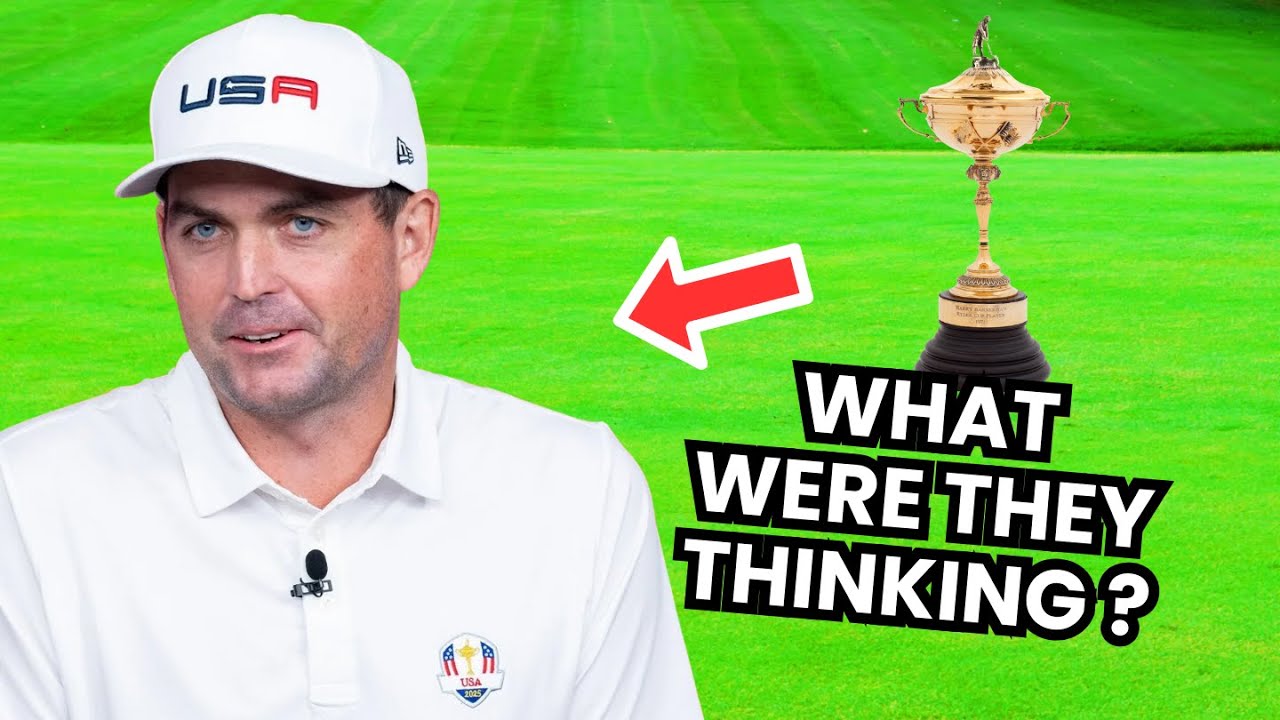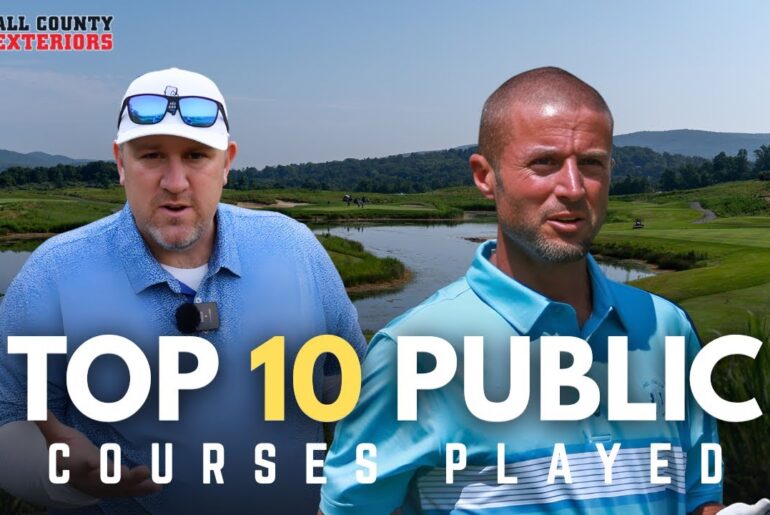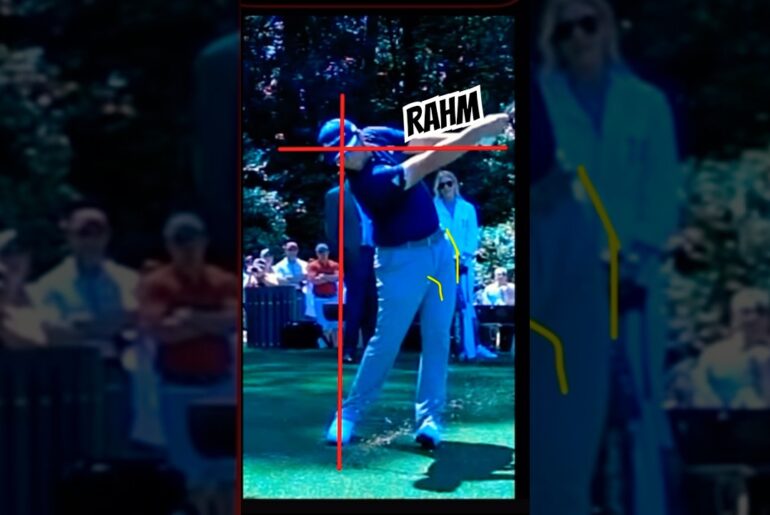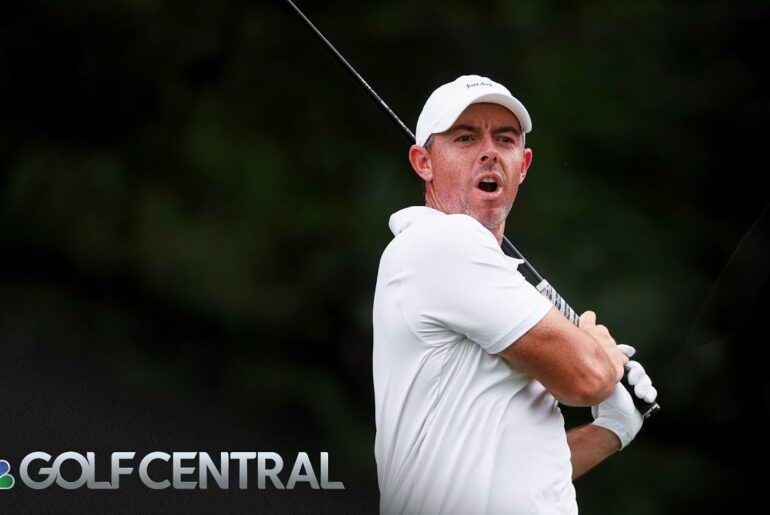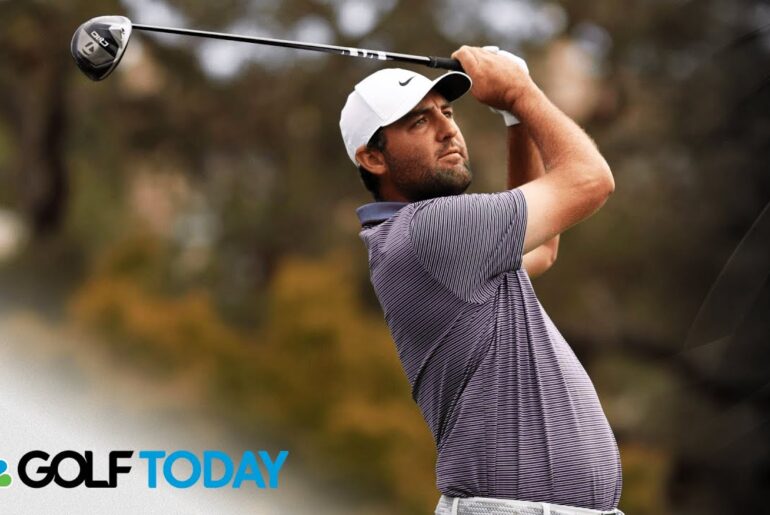Captains live and die by their Ryder Cup wildcards. In this countdown, we break down nine of the most second-guessed captain’s picks (and pick-adjacent decisions) ever—from chemistry bets that went flat to nostalgic nods that backfired. Expect context, receipts, and a few “what were they thinking?” moments.
If you love golf history and spicy selection debates, hit subscribe and tell us your own “worst pick” in the comments. 👇
👍 Like if you learned something
📝 Comment your personal worst Ryder Cup pick
🔔 Subscribe for more Ryder Cup deep dives & golf stories
Players & moments covered
Webb Simpson (2014), Sergio García (2010 non-playing VC saga), Tiger Woods (2010), Hal Sutton’s 2004 plan, Curtis Strange (1995), Phillip Price (2002 usage), Lee Westwood (2016), Keegan Bradley (2014), and Nick Faldo’s 2008 selections.
Worst Ryder Cup Picks
Hashtags
#RyderCup #Golf #PGA #DPWorldTour #GolfHistory
Chapters (8:38)
00:00 Intro – why captain’s picks matter
00:25 #9 Webb Simpson (Gleneagles 2014)
01:05 #8 Sergio García as non-playing VC (2010)
01:45 #7 Tiger Woods as a pick (Celtic Manor 2010)
02:28 #6 Hal Sutton’s 2004 “plan” and the ripple effects
03:10 #5 Curtis Strange (Oak Hill 1995)
03:52 #4 Phillip Price benched, then stuns Mickelson (The Belfry 2002)
04:32 #3 Lee Westwood (Hazeltine 2016)
05:15 #2 Keegan Bradley (Gleneagles 2014)
05:58 #1 Nick Faldo’s 2008 picks (Valhalla)
07:05 Takeaways – form vs. loyalty vs. optics
07:35 Your turn – drop your worst pick
07:50 Thanks for watching / subscribe
08:10 End screen cards (subscribe + next video)
Captains have the hardest homework in the RDER Cup. Form players, locker room glue, proven veterans, everyone has a case. But sometimes those wild cards, those captain’s picks don’t just miss fire, they blow up in the captain’s face. Here are 10 of the most second-guessed selections in Rder Cup history where hindsight and results teamed up to shout, “Maybe not that guy.” Nine. Tom Watson picking Web Simpson. Glenn Eagles 2014. Simpson had been out of form all season, but Tom Watson leaned on his past partnership with Bubba Watson as justification. On Friday morning, Simpson nervously topped his opening three-wood barely 200 yards off the first tee and he never found his footing in the fourball loss. He was benched for all of Saturday. By the time he reappeared in the Sunday singles, the cup was slipping away. He picked up a half that barely dented the scoreboard. When a captain spends a wild card on chemistry, that chemistry has to fizz. Instead, this was flat soda and a symbol of Watson’s shaky leadership that week. Eight. Sergio Garcia, 2010. Colin Montgomery’s odd experiment. Garcia wasn’t picked as a player. He was brought in as a non-playing vice captain because Monty didn’t think his form justified selection. That part made sense. Then in the leadup, Monty seemed to regret it, saying he wished he’d gambled on Sergio. After all, the optics were messy. Europe’s greatest Rder Cup talisman left out, yet hanging around the team room. Anyway, the indecision highlighted how even great captains can wobble when dealing with icons. Garcia returned as an automatic qualifier in 2012 and was back to his fiery best, but 2010 remains the year Europe flirted with the idea of halfpicking him. It was confusing for fans, awkward for Sergio, and showed how picks can be mishandled even before anyone strikes a ball. Seven. Cory Paven picking Tiger Woods. Celtic Manor 2010. On paper, who questions Tiger? In 2010, though, context was everything. While still world number one, he was just months removed from his personal scandal, regularly skipping tournaments, and looked nothing like the untouchable force captain’s dream of penciling in. Paven rolled the dice anyway, hoping greatness would show up on demand. Tiger finished three to one individually, but the selection disrupted team balance. Other US form players were left home and pairings with Tiger always felt forced. The US lost 14 12 to 13 12. In a match that tight, every ripple mattered. Critics argue that while Tiger showed flashes of brilliance, the chemistry cost of building the side around him outweighed the benefit. Speaking of which, like and subscribe to benefit from more great golfing content. Six. Hal Sutton’s pairing plan disguised as picks. Oakland Hills 2004. On paper, Sutton’s captain’s picks, Stuart Sink and Jay Hos, weren’t unreasonable. Sink was a rising talent with a solid all-around game, and Hos brought steadiness and veteran presence. But the real story of 2004 was Sutton’s grand design, forcing Tiger Woods and Phil Mickelson into a dream team partnership. They promptly imploded, losing twice on the opening day. Their clashing rhythms and cool body language telegraphing dysfunction, and the US never regained momentum. Sink and Hos produced three points between them, not nearly enough to offset the damage at the top. The issue wasn’t just who he picked, but how those picks fit into a doomed grand plan. Sometimes ambition kills chemistry. Five. Lanny Watkins picking Curtis Strange. Oak Hill, 1995. 5 years after his major peak and six years removed from his last writer Cup appearance, Strange’s selection was a bolt from the blue. The logic was familiar. Steadying experience, a respected voice in the team room, and memories of his US Open grit. The outcome was equally familiar. Strange played twice, lost both, and never truly impacted the matches. Meanwhile, rising Americans like Billy Mayfair, sharper that season, were left at home. The 1995 RDER Cup became infamous for the US collapse on Sunday singles, where Europe stormed back at Oak Hill to win 14 12 to 13 12. Strange’s empty contribution only sharpened the criticism. In hindsight, it was sentimentality over strategy, and the gamble aged badly. What’s your personal worst pick? Let us know in the comments. Four. Sam Torrance benching Philip Price. The Belelfrey 2002. The headscratching call here wasn’t the pick itself. It was the fact that Price was left on the pine for most of the week. Price mightn’t have been a big name, and he hadn’t been tearing up leaderboards, but his form did earn him an automatic pick ahead of bigger names like Bernhard Langanger and Yesper Parnic. But it wasn’t enough to get him a tea time. Torrance benched him for three of the four sessions leading into Sunday where drawn against Phil Mickelson in the singles, Price produced the round of his life to score a stunning three and two victory. Either his singles win came from nowhere or Sam Torrance simply wasn’t paying attention to Price’s white-hot form on the practice range. Europe’s victory erased the criticism, but we’ll always wonder what might have been if only Price had been unleashed a little sooner. Three. Lee Westwood 2016. Darren Clark’s nostalgic nod. Clark’s decision to bring an old maid in from the cold could have gone either way, but since it’s number three in a video on the worst Rder Cup picks, you can probably guess how it turned out. Westwood was a Rder Cup titan, no question. But in 2016, his putting was in witness protection. On the Greens at Hazel Teen, every 5-footer looked like a maths problem he’d rather not solve. He went zero to three for the week, including a painful loss in Sunday singles where his flat stick simply refused to cooperate. Europe, already struggling against a stacked American team, couldn’t afford passengers, and Westwood’s numbers were glaring. Captains often lean on experience, but experience only works if it shows up on the card. In Westwood’s case, Clark picked a legend past his RDER Cup sellby date, and the Americans feasted. Two, Tom Watson picking Keegan Bradley. Glenn Eagles 2014. Two years earlier at Madina, Keegan Bradley had been electric, an emotional spark alongside Phil Mickelson, the kind of pairing that lit up crowds and nearly powered a US miracle. But by 2014, his form had dipped and his fiery streak tipped into erratic. Watson picked him anyway, hoping for lightning in a bottle. The gamble fell flat. Bradley looked rusty, managing just one point from three matches, including a subdued singles loss. His fiery edge, once an asset, too often spilled into erratic play. Europe rolled to a comfortable 16 1/2 to 11 12 victory, and Bradley’s struggles became symbolic of a US side built on reputation rather than form. It was symptomatic of Watson’s old school gut feel approach, rewarding past emotion rather than current data. The pick was defended as loyalty, but history calls it a misread. One, Nick Faldo’s picks, 2008. A collective disaster. Number one isn’t one player, it’s an entire selection. At Valhalla in 2008, captain Nick Faldo opted for Ian Palter and Paul Casey as his wild cards, leaving out Darren Clark, the emotional catalyst for Europe’s 2006 victory. Palter eventually turned into a Ryder Cup icon. But at the time, the pick looked like favoritism. He and Faldo shared management ties. Casey underwhelmed and the optics of spurning Clark alienated fans and even some players. Europe were thrashed 16 and a half to 11 12. Poulter earned four points and built on his burgeoning reputation, but it felt like accidental justification rather than inspired leadership. Faldo’s captaincy is remembered as muddled, aloof, and strangely tactical only in hindsight. His pick symbolized that confusion. Two players who weren’t obvious, chosen at the expense of a leader who could have steadied a sinking ship. It was the blueprint for how not to do captain’s picks. The Ryder Cup magnifies everything. Roars, misses, even captaincy. A good pick can spark a miracle. A bad one becomes legend for all the wrong reasons. And while hindsight is always smug, the lesson stays the same. In a format this volatile, past glories don’t matter. Pick the guy who’s ready this week or watch the scoreboard remind you why. Thanks for watching. We’ll be covering all things Ryder Cup, so stay tuned and don’t forget to like and subscribe.

